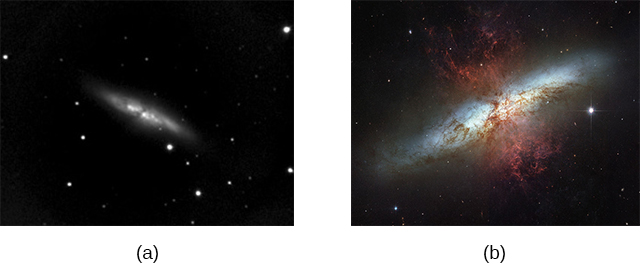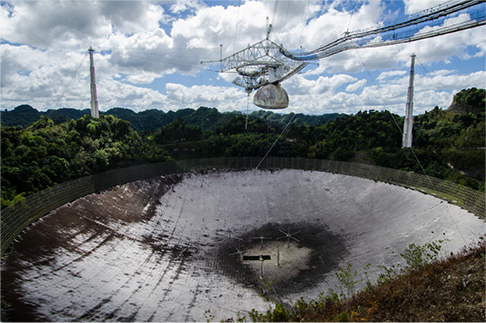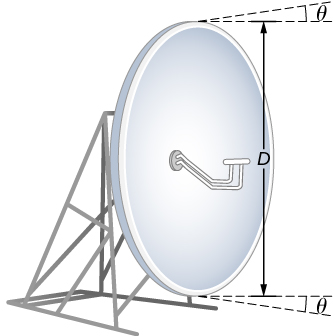| << Chapter < Page | Chapter >> Page > |

The answer in part (b) indicates that two stars separated by about half a light-year can be resolved. The average distance between stars in a galaxy is on the order of five light-years in the outer parts and about one light-year near the galactic center. Therefore, the Hubble can resolve most of the individual stars in Andromeda Galaxy, even though it lies at such a huge distance that its light takes 2 million years to reach us. [link] shows another mirror used to observe radio waves from outer space.

Check Your Understanding What is the angular resolution of the Arecibo telescope shown in [link] when operated at 21-cm wavelength? How does it compare to the resolution of the Hubble Telescope?
, 3000 times broader than the Hubble Telescope
Diffraction is not only a problem for optical instruments but also for the electromagnetic radiation itself. Any beam of light having a finite diameter D and a wavelength exhibits diffraction spreading. The beam spreads out with an angle given by [link] , . Take, for example, a laser beam made of rays as parallel as possible (angles between rays as close to as possible) instead spreads out at an angle , where D is the diameter of the beam and is its wavelength. This spreading is impossible to observe for a flashlight because its beam is not very parallel to start with. However, for long-distance transmission of laser beams or microwave signals, diffraction spreading can be significant ( [link] ). To avoid this, we can increase D . This is done for laser light sent to the moon to measure its distance from Earth. The laser beam is expanded through a telescope to make D much larger and smaller.

In most biology laboratories, resolution is an issue when the use of the microscope is introduced. The smaller the distance x by which two objects can be separated and still be seen as distinct, the greater the resolution. The resolving power of a lens is defined as that distance x . An expression for resolving power is obtained from the Rayleigh criterion. [link] (a) shows two point objects separated by a distance x . According to the Rayleigh criterion, resolution is possible when the minimum angular separation is

Notification Switch
Would you like to follow the 'University physics volume 3' conversation and receive update notifications?